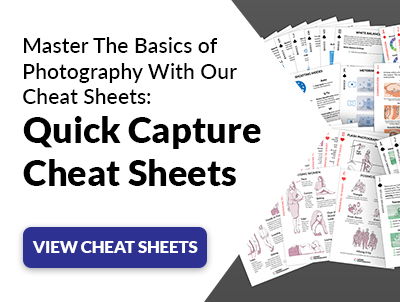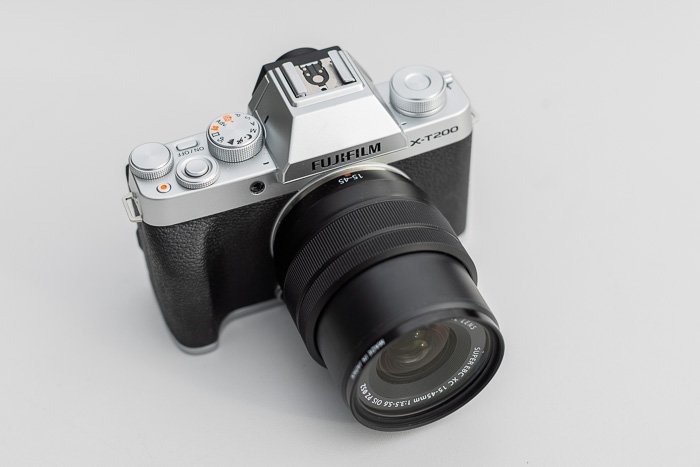With the rise of technology, the line between professional and amateur gear has begun to blur. Point-and-shoot cameras have now reached a quality level that rivals hobbyist DSLR cameras.
So for the everyday photographer, the real question is, which one do I buy? The digital SLR camera or a point and shoot? We look at DSLR vs point-and-shoot cameras to help answer that question!
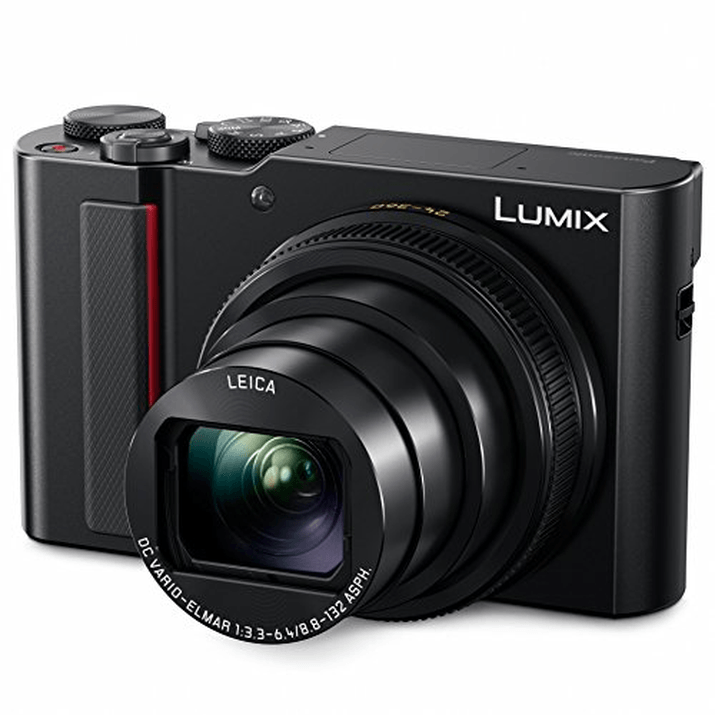
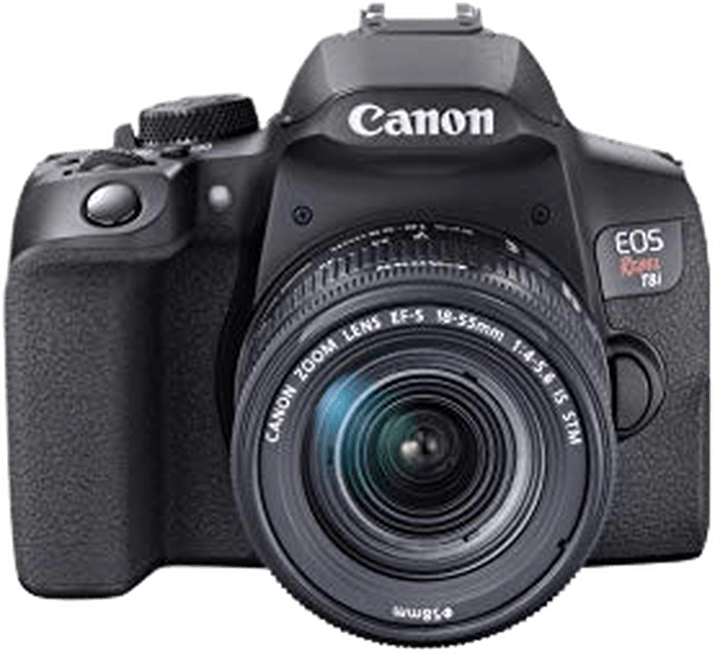
What Is a Point-and-Shoot Camera?
Point and shoots (compact cameras) are the most common cameras families, and individuals use. “Point and shoot” means a built-in lens, flash, and autofocus (AF).
These cameras are popular because they are easy to use and boast a user-friendly, compact size. The built-in lenses are usually focus-free with stationary apertures.
Such cameras with a flash have no control over the flash exposure due to the fixed aperture size. But due to tech advances, some newer models give some control over aperture and exposure.
Point-and-shoot cameras are much simpler to operate and more compact than DSLRs. But they do not give photographers as much control over the final image. Most of its use is automatic.
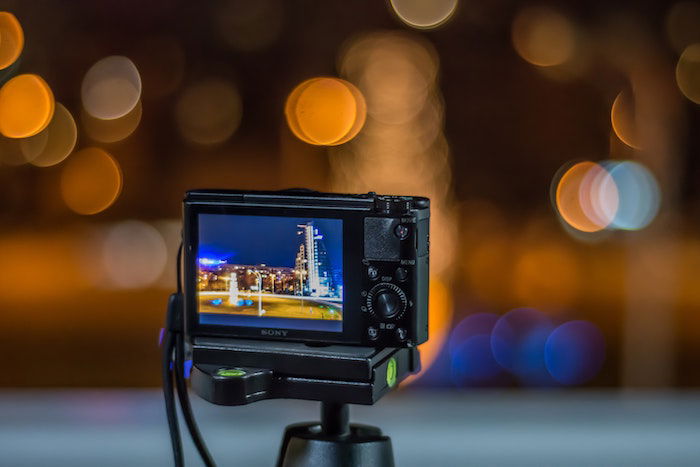
Point and Shoot Advantages
Point and shoots, especially modern ones, are convenient and nifty little devices. Here are the pros of choosing a point-and-shoot camera:
- Compact Size: A point-and-shoot camera’s small and convenient size is a massive advantage over DSLRs. You can throw it in a purse or small bag with ease. And there’s no need for large camera bags.
- Lower Weight: Along with their small size, point and shoots are lightweight and easy to carry.
- Easy to Use: Point-and-shoot cameras are intended to be used right out of the box (after charging). They are user-friendly and don’t take a lot to learn how to use.
- Automatic Functions: Most cameras are almost fully automatic. This takes all of the complex manual work away from you. So you can easily use automatic modes like Program Mode.
- Quiet Functions: Point and shoots are fully digital. So they tend to be very quiet shooters. This is a big advantage.
- Fixed-Lens Camera With Built-In Flash. With all of the key components being fixed, there is no need to carry around additional lenses or flashes.
- Good Prices: Point and shoots come in a varied price range. But all are very affordable!

Point and Shoot Disadvantages
That being said, point-and-shoots were not intended for advanced users. Here are their shortcomings:
- Lower Image Quality: These cameras are not intended for professionals and don’t sport powerful sensors. So the megapixel (MP) count is low. And this leads to lower or limited photo quality.
- Limited Control: The manual control boasted by DSLRs is missing in point-and-shoot cameras.
- Lack of Low-Light Ability: These cameras are not intended for low light. So the sensors are not very powerful.
- A Fixed Lens. The fixed lens means you’re stuck with whatever is on the camera indefinitely and cannot change lenses. So the inability to change lenses leaves you with limited shooting options.
- Limited Speeds: Unlike a DSLR, the camera has fixed shutter speed and autofocus settings.
- Short Battery Life: Due to the use of a digital LCD screen, their batteries tend to die faster than a DSLR.
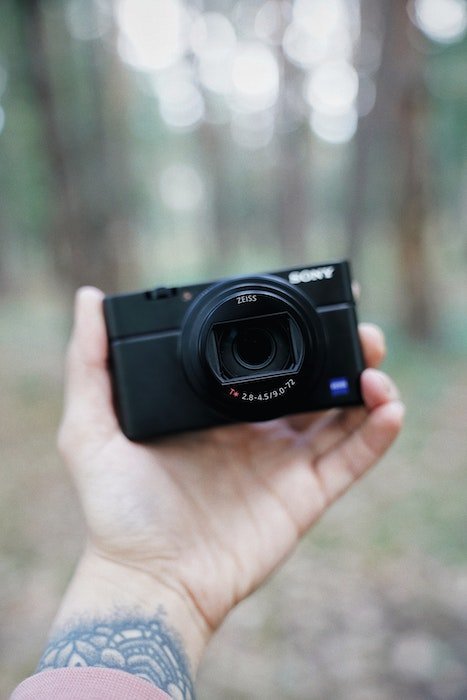
What Is a DSLR Camera?
DSLRs are generally seen as interchangeable lens cameras. The cameras look quite professional and have an arsenal of lenses to choose from!
DSLR is an acronym for a digital single-lens reflex camera. A DSLR combines the optics and mechanisms of an SLR (film camera) with a digital image sensor.
It’s very customizable. And it has a lot of coveted features. Photographers can manipulate the camera’s capability to shoot a particular scene to affect the final image.
A DSLR works like this… Inside its camera body is a mirror. And the mirror reflects the light from the lens into an optical viewfinder.
This is how you can see what you’re shooting through the lens. And it is where the term “reflex” comes from.
When the shutter is pressed, that mirror flips up out of the way. And then the shutter slides open. Light from the lens goes straight to the imaging sensor, where a photo is taken.
Professional photographers generally use DSLRs and mirrorless cameras due to their interchangeable lenses. Plus, they produce high-quality images and have customizable functions and larger sensors.
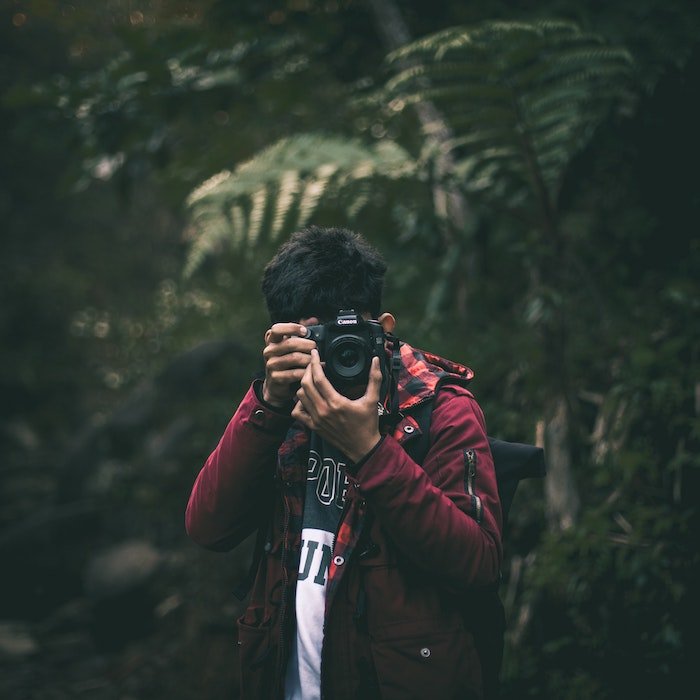
DSLR Advantages
There are quite a few advantages to using a DSLR camera. I’m an avid DSLR user myself!
- Great Image Quality: DSLRs sport powerful sensors. And they have very high megapixel counts, far above point-and-shoot cameras. So the final image is very high-quality and professional grade.
- An Optical Viewfinder: The optical viewfinder lets you view the frame in actuality rather than relying on a digital LCD screen.
- Interchangeable Lenses: This is a huge advantage to DSLRs. The ability to change lenses allows unlimited possibilities. The lens is arguably the most important aspect of photography. This is because the camera lens determines most of the quality and ease of shooting. A lens also influences the final product significantly more.
- Better Low-Light Capability: A DSLR camera’s low-light capability is far superior to a point-and-shoot camera. This is because of the powerful sensors. Plus, you can change lenses to one with a very wide aperture.
- Flexibility and Customization: DSLRs are the most adaptable cameras, along with mirrorless cameras. You control every facet of the camera.
- Tailored Shutter Speeds and Focus: The shutter speed and focus are fully customizable on a DSLR.
- Full Control Over the Aperture: You have full control over the aperture due to being able to change lenses.
- Longer Battery Life: DSLR batteries are powerful and contribute to longer shooting time.
- Weather Sealing and Durable Build: Most DSLR bodies have weather sealing and are very durably built. So they’re meant to withstand the elements.
- Longer Resale Value: Compared to lower-quality point-and-shoot cameras, DSLRs tend to retain more resale value over time.

DSLR Disadvantages
Like most devices, there are cons to DSLR cameras as well.
- More Expensive: Due to the higher-quality inner components and features, DSLRs tend to be more expensive luxuries. They are far less cost-effective than point-and-shoot cameras.
- Extra Accessories: DSLRs come as a body only unless you purchase a kit. But even in kits, the lenses don’t tend to be very good. As such, you must invest even more money in extra lenses. Plus, you may have to buy external flashes and other components for your camera. This is unlike in point and shoots, where everything is already built-in.
- Large and Heavy: To house all of the components, DSLRs tend to be large, heavy, and generally bulky in size. Backs and necks can suffer with these cameras after extensive use.
- Less Portable: You have to carry so much with a DSLR. This includes the body, the lens(es), and accessories. So a DSLR kit is less portable than a convenient point and shoot.
- Noise: DSLRs tend to be noisier when taking photos.
- Steep Learning Curve: Due to the DSLR’s manual nature and excess features, they can be complex to the untrained.
- Ongoing Maintenance and Care: DSLRs require regular cleaning, maintenance, and care by professionals to operate properly.
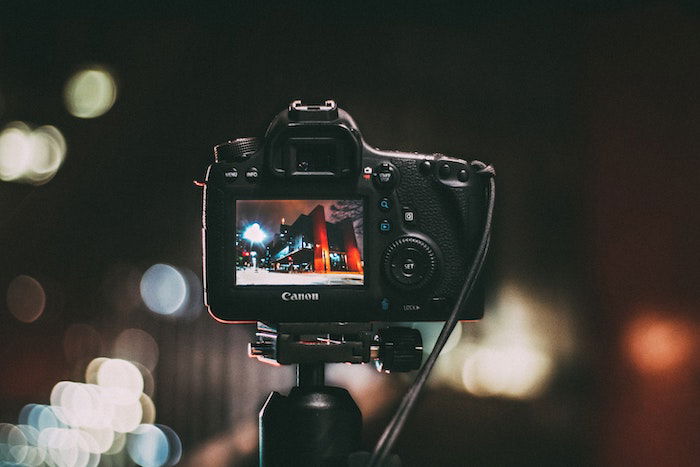
Camera Recommendations
We list our top three recommendations for point-and-shoot cameras and DSLRs. (With some manufacturers discontinuing DSLRs, you may also want to look at mirrorless cameras.)
Best Point and Shoot Recommendations
Here are our top recommendations for the best point-and-shoot cameras.

Our top choice point-and-shoot camera is the Panasonic Lumix ZS200. It is ideal for enthusiasts who want high-quality images with minimal input to the camera’s settings.
For those who want more control, it has multiple shooting settings that let you easily capture certain subjects. You can use an Aperture Priority mode to control the depth of field and capture 4K video.
The Lumix ZS200 is particularly good at capturing high-speed subjects. The camera can shoot up to 100 fps in Full HD video. And you are also able to stitch together sequence images in-camera!
On top of these features, the ZS200 has a 15x optical zoom and a Leica-manufactured lens. These elements in a compact camera make it an ideal choice for point-and-shoot photographers.
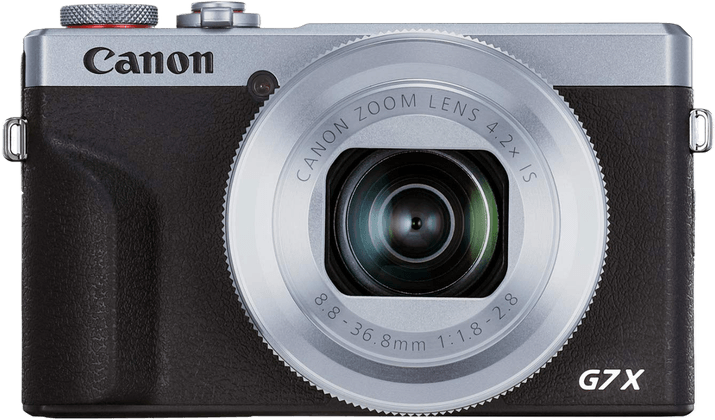
The Canon Powershot G7 X Mark III is a favorite in the point-and-shoot community. It features a touchscreen that also flips outward to help take self-portraits.
When looking at the camera, you can see that it is laid out with user experience in mind. There are few buttons to distract you or that you would accidentally press when shooting.
At the top, you will find a dial to quickly change the shooting mode. You will also find an exposure compensation wheel.
This Canon camera also has a 4.2x optical zoom. And its lens can reach the equivalent of a 24mm focal length on the wide-angle end of the spectrum.
The Powershot G7 X Mark III also lets you film up to 120fps at Full HD. And adding to its wide range of features, it has Wi-Fi and Bluetooth capabilities.
The latter benefits those who like to share their images online through social media. And it also lets you control your camera remotely from your smartphone.
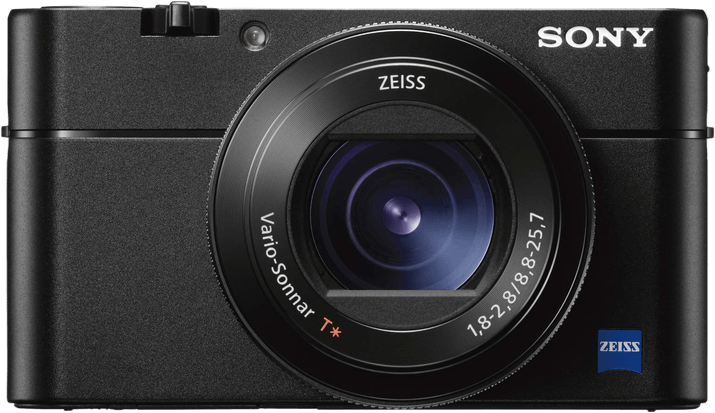
The Sony Cyber-shot RX100VA is another heavyweight when considering point-and-shoot cameras. Its biggest highlight is its fast and extensive AF system.
The autofocus system features 315 AF points and a quick response time. This makes it ideal for those using point-and-shoot cameras so they don’t miss any action.
This benefits many photo genres. But it makes this Sony camera most suitable for street or sports photography.
Sony has partnered with Zeiss to produce the lens for this camera. This is a lens that can produce macro shots. And it can provide a blurred background thanks to its f/1.8 aperture.
One feature that I like is its retractable electronic viewfinder (EVF). This lets you still give your photos full attention when trying to capture a certain image.
I am also a big fan of the Optical SteadyShot stabilization developed by Sony. This is useful for taking crisp images with the Cyber-shot RX100VA in fast-paced or low-light environments.
Best DSLR Recommendations
Despite the discontinued production of DSLRs by Nikon and Canon, there are still many on the market. And Pentax is still making DSLR cameras. Here are our top DSLR recommendations.

The EOS Rebel T8i is a brilliant DSLR for beginners who want to dive into manual photography. And if you are worried about image quality, the 24.1 MP resolution will settle your mind.
It has a cropped frame sensor, which means it is not to a professional standard. But the cropped-frame sensor makes the camera more compact and reduces the price.
It has functions like every other manual camera. It lets you set the aperture, shutter speed, and ISO depending on your lighting conditions.
On top of the classic manual settings, you will also find a range of other settings to assist you. And learning with the Rebel T8i will let you transfer these skills to any photo camera available!
The EOS Rebel T8i is inexpensive but boasts contemporary features such as 4K video and Wi-Fi connectivity. Plus, the camera has eye-detection autofocus!
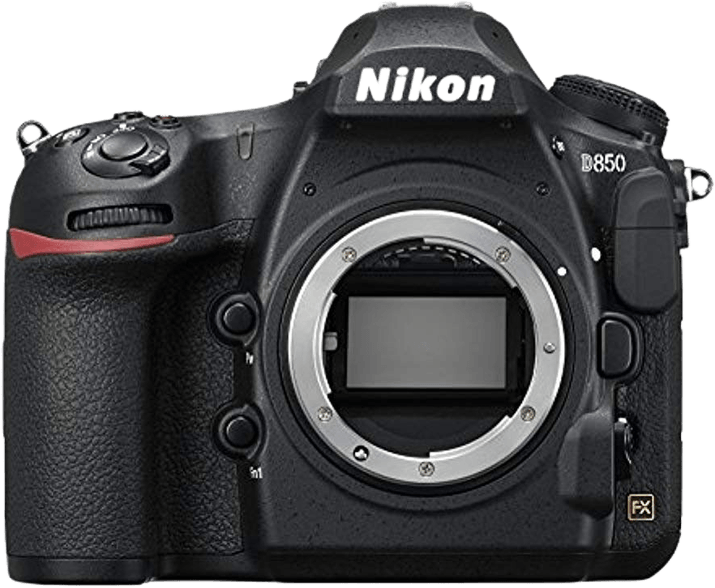
If money is no issue, one of our favorite full-frame DSLRs is the Nikon D850. This is a professional DSLR that boasts a 45.7 MP resolution.
On top of that, this Nikon camera can shoot 9 fps on continuous shooting. Plus, it can shoot 4K Ultra HD (UHD) if you need video.
The D850 handles low-light situations well, thanks to its impressive ISO range. And its autofocus system is highly impressive as well.
The AF system is quick, ensuring you don’t miss the shot. And it is also great at detecting fast-moving subjects and subjects in dark situations, which can be a pain to capture.
Modern features such as a “tilt-and-touch” screen can also be found. These screens make the user experience easier and let you take better pictures in challenging locations.
The D850 also has Wi-Fi and Bluetooth abilities. This lets you control your camera remotely, which is ideal for many photo genres.
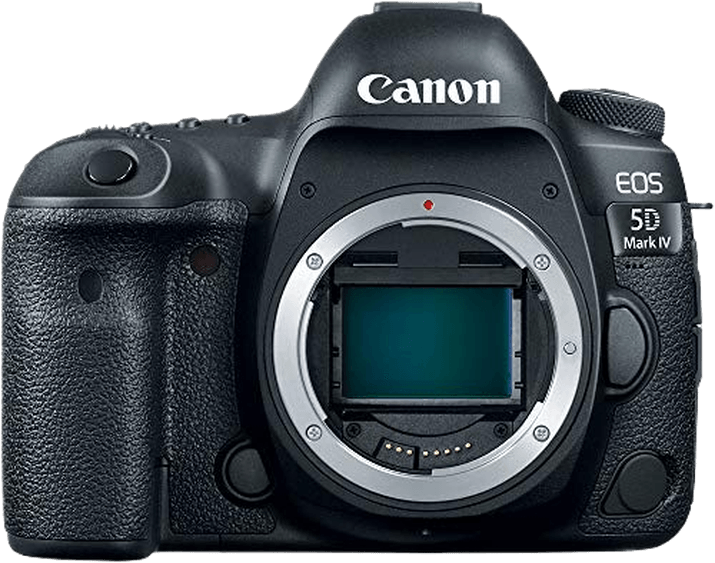
The Canon 5D Mark IV is another DSLR you will want to consider if you want a great all-around DSLR. It has a full frame sensor with a 30.4 MP resolution sensor.
The 5D series is well known for DSLRs that can do it all. I have the 5D Mark III myself!
This Canon’s strongest quality comes from its versatility in many photo environments. The build quality is high, making for a reliable camera.
And its specs on the inside emphasize this as well. It can produce fast and sharp images thanks to its reliable AF system.
Its size and shape have dramatically reduced since its last version (the 5D Mark III). This makes the 5D series even more portable while allowing you to use the same high-quality lenses.
Its video features have also been updated. So if you want to find a professional DSLR that works well in several environments, you can’t go wrong with the Canon 5D Mark IV.
Conclusion: DSLR vs Point and Shoot – Which is Best?
Simply put, neither is better than the other. They are just different! One will suit a certain set of needs that the other may not.
Knowing the advantages and disadvantages of both a point-and-shoot camera and a DSLR is key. Then you can pick the right camera based on what you desire.




